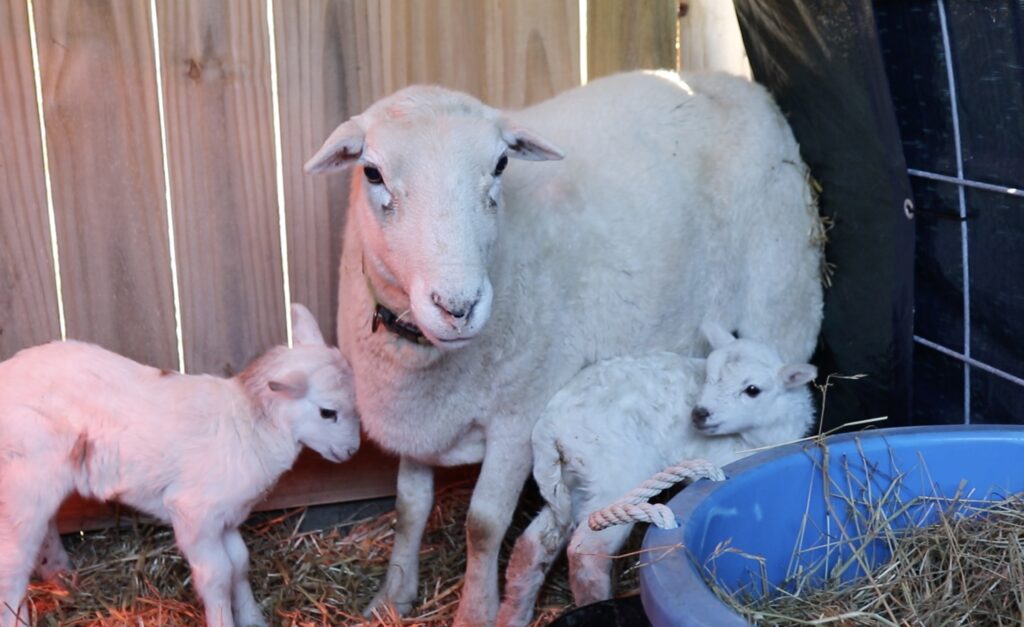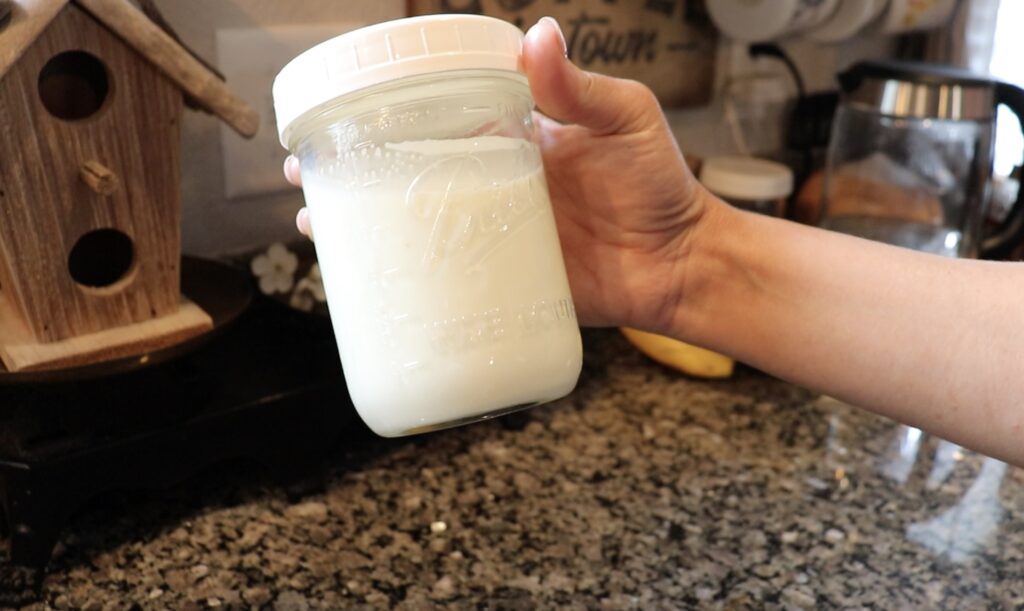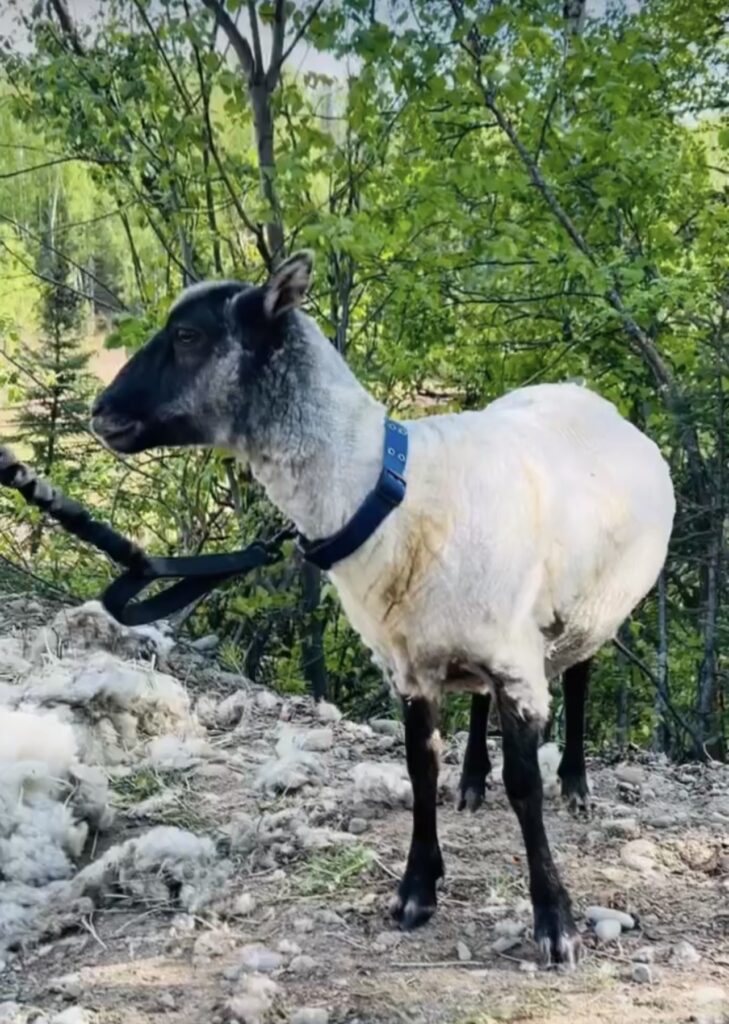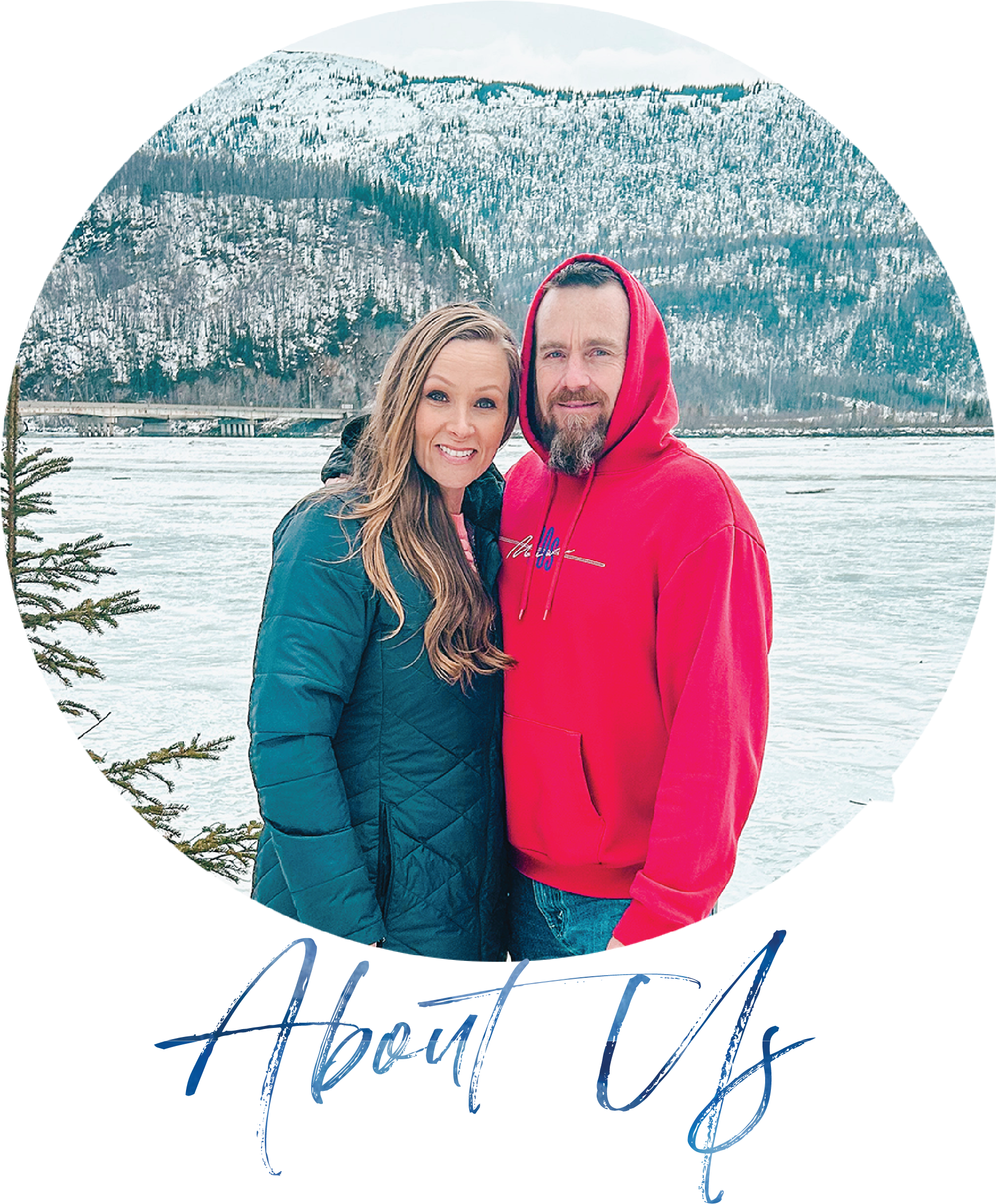
Homesteading was in my blood…
Sheep are a wonderful addition to the farm. They’re smaller and eat less than a cow. With their creamy, sweet milk, sheep are the perfect dairy animal for the homestead!
When I was a little girl, my mom decided to get a Nubian goat for our little homestead. If I remember correctly, my youngest brother was allergic to cow’s milk. So naturally, my mom bought a goat. I remember being so excited when we brought that goat home.
We named her Penny. When I look back, I believe my desire to homestead, started as a young child. My mom always had a coop with hens for fresh eggs, a big garden, our dairy goat & sometimes even a batch of meat rabbits.
I grew up pulling weeds, collecting eggs & milking our goat. It was engrained in me as a young girl. I didn’t start homesteading as an adult until I was about 35 yrs old. I had dabbled with hens for fresh chicken eggs & a few small garden fails, but that was the extent of it. In 2017, our whole life changed.
Where it all began…
We sold our home in the suburbs of Virginia & bought 18 acres of raw land. We built a home & a farm. The thrill of my childhood rushed through me as I dreamed of the animals we would have. The nostalgia of collecting eggs again with my little basket. I fantasized about the early morning walks through the garden.

My dreams became a reality and before I knew it, I had a massive garden and just about every farm animal you can think of. I was quite literally in heaven on earth.

My first dairy animal…
I knew that I wanted a dairy animal from the get go. I strategically planned getting a cow and presenting it to Joe in such a way that he would agree to it. Us ladies are good at that aren’t we? My first dairy animal was a jersey cow that I named Gracie-Ann. The milking began & it was so much fun. A lot of work, but so much fun.
I was making butter, yogurt and cheeses! All the the things. While I loved every minute of Gracie, she gave us a lot of milk. No matter what I did, we could never use it all. It got to the point that I would share it with the pigs and neighbors just so it wouldn’t go bad. After all, she was giving us anywhere from 1-1/2 to 2 gallons per day. You’re talking 10-14 gallons of milk a week for a small family of four.


We ended up selling our 18 acre farm in 2019. We only owned it for two short years. But we realized one day that we had built up so much value in our farm that if we sold, we could afford to pay off all of our bills and for the first time, get completely out of debt. And that’s what we did. We sold and purchased a smaller homestead.
New beginnings…
Downsizing the farm meant also downsizing the farm animals. I was beyond excited to finally get out from underneath the debt that loomed over our heads most of our marriage but at the same time heart broken to get rid of our precious farm animals, especially Gracie. You spend two years under the flank of a cow through rain, snow or shine…and you really do grow a bond that only a farmer could understand.
Our new homestead was only 1 acre but it didn’t take me long to start imagining ways that I could still farm even if it was on a smaller scale.
The only animals that we brought from the 18 acre farm, were our chickens. I longed for my own dairy animal again but how in the world could I have a cow on just 1 acre? I mean I could, but would she really be happy with such little space? That 1 acre had our house on it, our garage and two greenhouses that we built. So the space for the dairy animal was truly a fraction of an acre.
Why I switched to sheep…
I started researching sheep for dairy. Now there are true dairy sheep breeds like the East Friesian sheep, but we didn’t have any of those around where we lived. I settled for the Katahdin breed. Now the Katahdins are not a dairy breed in that they had very small teats compared to the East Friesian and they don’t typically produce the quantity of milk that an East Friesan does, but that didn’t mean they couldn’t be milked.
We didn’t need a lot of milk. I didn’t necessarily want to deal with that again but I wanted my own source of fresh, homegrown dairy for our family. I finally convinced Joe to buy one Katahdin ewe (female sheep) that was pregnant and that’s exactly what we did. We named her Delilah.

Delilah gave us two beautiful ewe lambs. I started milking her two weeks after she lambed. Our Sheep ended up being the perfect dairy animal for our small homestead. They didn’t take up or need as much space as a cow and they surely don’t eat as much as a cow.
It’s not for the faint of heart…
But milking sheep is different than milking a cow. They are much smaller animals and depending on the breed, their teats are significantly smaller than a cow’s. With a cow, you’re using your whole hand to milk that teat. With our sheep, her teats were maybe 2 inches long, much smaller than a cow.
You’ll quickly learn how little strength you have in your hands when milking a dairy animal. Just like playing a guitar, you get stronger and before you know it, it’s all about muscle memory.

A cow is typically in milk for 9-10 months out of the year as you usually dry them off 2-3 months before calving season. Sheep are in milk for a much less time. Depending on the breed, they’re usually in milk anywhere from 3-6 months.
Part of having a dairy sheep is understanding and being ok with the fact that part of the year, they will not produce milk. For our sheep, they breed in the fall, lamb in the spring and we are in milk from about April/May until about September/October.
Similar to how our chickens stop producing eggs in the winter months, our sheep stop producing milk as well. As a homesteader, we know their schedule and plan accordingly for those shortages by preserving the bounty while we have it in order to get us through the winter season.
Lamb/calf sharing…
You will hear people say that you need to milk your dairy animal twice a day. While you can choose to do that, I’m here to tell you that it doesn’t have to be that way. With my cow and with my sheep, I do something that is called “calf sharing,” or “lamb sharing.” Before we turn in for the evening, we separate the lamb from its mother into a separate pin.
A pin that is close to the mom so that she can still see, smell and touch her lamb through the fence. The lamb is just unable to nurse throughout the night. This doesn’t hurt the lamb as they do not need to eat at night. In the morning, I come out and milk mama and get the milk we need and then release the lambs to reunite with their mother where they remain with her all day to nurse whenever they choose to. Lamb sharing is the perfect milking schedule for the homesteader.
The best part about milking this way is that if you happen to be under the weather or out of town on vacation, you don’t have to worry about hiring a farm sitter to milk for you. Just leave the lambs in with the mama 24/7 and they’ll take care of the milking for you. Additionally, if you feel you have too much milk, don’t milk the next day.
Doing what works best for you…
Anytime you don’t want to milk, just leave the lambs in with their mama and all is well. It’s the only way I can have a dairy animal because who in the world wants a schedule of milking twice a day? Not me.

Each day I would get about a pint of milk from my ewe. That’s a huge difference from the 1-1/2 to 2 gallons a day I got from our Gracie girl. It ends up being the perfect amount of milk for our family. If I milk every day, I would get 3-1/2 quarts of milk a week. That’s just under a gallon a week.
As far as drinking goes, we don’t need anymore milk than that. Keep in mind though, if you want to make butter, yogurt and other dairy products, that may leave you needing more milk. Because of this, I chose to get several milking ewes on our Alaskan homestead…but more on that later.
The facts…
Sheep milk is creamy and delicious. It contains about twice the fat of cow’s milk. This means more “healthy” fats like monounsaturated and polyunsaturated, including Omega 3 and 6. Sheep milk is wonderful for making homemade butter, yogurt and cheeses.
Sheep milk is naturally homogenized, which means that the cream does not easily separate from the milk like a cow’s does. Within hours of putting my fresh cow’s milk in the fridge, I would already see a cream line. With sheep (and goats) it takes several days for the cream to separate. A lot of homesteaders that have sheep & goats choose to buy a cream separator.
It separates the cream for you within minutes & then you can use it to make butter and other goodies. Additionally, you can let your milk set in the fridge for 3-4 days and wait for the cream line to separate. Scoop the cream into a mason jar & put it in the freezer until the next round of milk is ready to be de-creamed.
Continue to add the cream to the jar & storing it in the freezer until you have enough cream to make your butter. You can see how a cream separator would be much more faster & efficient.

Raw milk whether it’s from a cow, goat or a sheep is extremely healthy for you. It’s a complete, natural food containing more amino acids, antimicrobials, vitamins, minerals and fatty acids than pasteurized milk. Milk in its most natural form is most easily digested and utilized by the body.
Even for the brief time that we didn’t have our own dairy animal, I bought my raw cow’s milk from a local farm. After having my own fresh, raw milk, there was no going back for me.
Buying our new Alaskan homestead…
As Joe was nearing retirement from the military we started planning where we wanted our forever homestead to be. We were stationed in Alaska several times with the Army and the Coast Guard and fell in love with the state. Parker was born in Alaska on the island of Ketchikan.
It was kind of a no brainer that we were heading back to Alaska for good. It just felt right. And so that’s what happened. We sold the 1 acre homestead in Virginia and that meant selling off our homestead animals as well. Traveling across the country on a road trip and a three day ferry ride, wasn’t exactly ideal for trailering farm animals. We found them all good homes and headed west to our forever homestead.
Once we got settled on the Alaskan homestead, I once again started day dreaming about my farm animals again. Ok let’s face it, I was already dreaming on the road trip across country! We immediately added chickens to the homestead for fresh eggs but I knew deep down that I wanted another dairy animal.
Choosing homegrown dairy again…
As much as I loved my cow, cows were bigger, ate more, cost more money and gave us more milk than we needed. So once again, I settled on sheep. This time we chose a different breed. Our ewe in Virginia was a hair sheep.
Hair sheep do not grow wool that needs to be sheared every year. And while Katahdins do well in Alaska, we wanted a breed that we thought would be more hardy for the intense cold temperatures we experience on our homestead during the winter season.
We’ve seen it as cold as -40F at our cabin. We settled on the Shetland/Icelandic cross breed. They are a wool sheep that does require shearing each year. We added one ram named Samson, and two ewes named Esther and Naomi. Esther came with a ram lamb. A two for one deal if you will.


Sheep are a multi-purpose homestead addition…
As you might already know, sheep aren’t just good for their milk, their meat is excellent. On our farm, we raise up the lambs each year to about six months of age and then they go in the freezer. Nothing better than a juicy lamb roast or lamb chops seasoned to perfection.
At the time of this post, we are heading into our first spring with our new flock of sheep. Both of our ewes are pregnant and ready to lamb any time within the next month. As I mentioned earlier, one dairy ewe may not be enough if you plan to make butter and such.
We started out with two ewes, however, I may decide to raise up one of their ewe lambs for a third milking ewe. Since they’re only in milk for 4-6 months out of the year, I want to maximize the milk we get so that I can preserve it in ways to enjoy throughout the winter season.
Wool…
Another advantage to wool sheep is utilizing their wool for homemade clothing. This is something I’ve yet to venture into. When we bought our Alaskan flock they were about two years old and had never been sheared yet. The first spring we sheared them, the wool was matted and disgusting.
Not the quality you would want for spinning wool. Now I will be honest, I have no desire to learn how to process and spin my own wool into yarn. With homeschooling Parker and running a full time YouTube channel, I just can’t fathom the time that would have to go into that.
I have researched & found that there are companies that you can ship your wool off to and they will process it for you and send you back beautiful skeins of yarn. This is something I may try in the future. After all, I do love to crochet blankets and things. How neat would that be if I could make beautiful items with my homegrown sheep wool?
Learning as we go…
Shearing our sheep for the first time was pretty much a comedy show. We’d never sheared a sheep before and it showed. We of course did our research and bought a shearing kit on Amazon. We sheared the ram and both ewes.
It wasn’t perfect but it got the job done and the sheep seemed so grateful. Must’ve been nice to rid themselves of the thick blankets that covered their bodies right before the warm Alaskan summer.


I think being a “Shepherdess” suits me just fine. I so enjoy having fresh meat & dairy on the farm. Sheep are wonderful. They’re spunky & gentle and they require so little yet they give back so much. Having a dairy animal on the homestead is an awesome experience for your children as well.
Parker helps me with every aspect of milking and tending to the sheep. It’s great for them to learn the responsibility of caring for the animal’s needs while also enjoying the little lambs as they frolic through the pasture.
I hope I’ve convinced you that sheep are the way to go. No, I’m just kidding because I love cows too. It really depends on the needs of the homestead. For our family, which is now just a family of three since Lexxy is grown and out of the house, sheep are exactly what we need. Cheers!


